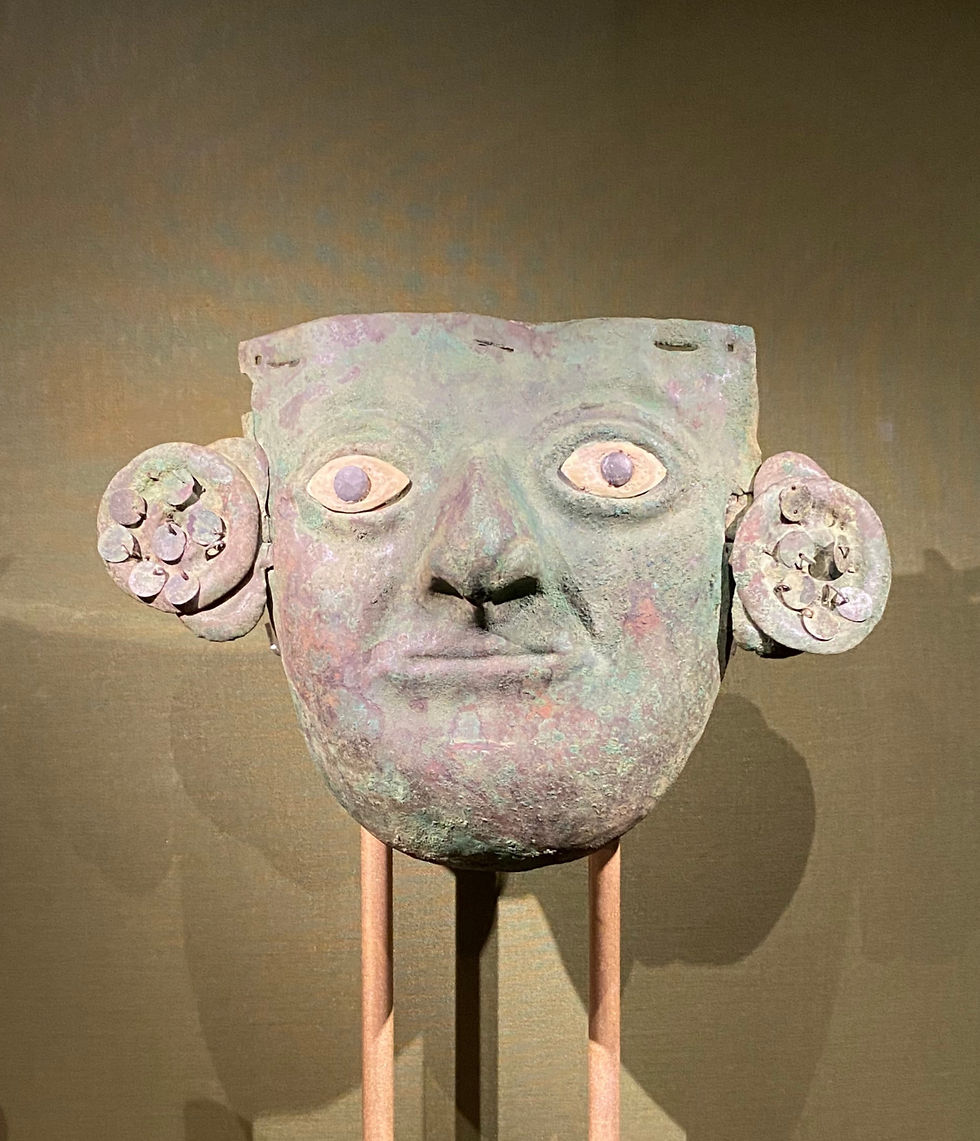Peru: A journey in Time, British Museum
- dandelion

- Nov 25, 2021
- 3 min read
Updated: Nov 30, 2021
Any historical knowledge I have of Peru comes from a school-girl fascination with the Incas, a yearning to visit Machu Picchu and everyone's favourite bear, Paddington! So, it's no exaggeration to say that I was riveted by the exquisite new exhibition at the British Museum which tells a story of the 3000 years leading UP TO the fall of the Incas (who look relatively modern) through an astounding collection of mind-blowing ancient objects.

The exhibition takes us from the early culture of the Chavin in 1200 BC – through the rise and fall of six civilisations (in six chronological sections) – to the fall of the Incas to the Spanish in AD 1532. The lack of a script-based writing tradition in these cultures means that objects (pottery, textiles, musical instruments, gold pieces) take on a huge significance in telling their story. In addition to eighty artefacts from the British Museum’s collection, there are forty ancient objects on loan from museums in Peru, most of which have never been seen in the UK before.
Among the first objects on show are ceramics which reflect a three-fold view of the world: snakes (underworld), Cats (world of men) and birds (the heavens). These three elements recur throughout. The impressive 2500-year-old gold headdress with large ear plates [see pic] which was part of an elite burial depicts feline fangs and snake’s appendages.

The oldest object on loan is a ceremonial vessel from the Cupisnique culture (an indigenous culture that flourished from around1500 BC to 500 BC) in the shape of a contorted human body [see pic]. It is thought to date from about 1200 BC and possibly represents someone born with a disease (such as Marfan Syndrome) which causes unusual flexibility which was a revered ability in this culture. A ceremonial drum (100 BC - AD 650) – a loan from a private collection in Lima –shows the Nasca people’s treatment of their defeated enemies. It's not for the faint hearted!
Indeed, this exhibition doesn’t shy from the gruesome. Early on there is a human-deer vessel on display. White-tailed deer had a special significance among Andean societies and are part of their mythology, as creatures able to transform into hybrid human beings. People carried out ritual deer hunts in order to extract their blood and small bezoar stones (hard lumps built up around undigested material) from their stomachs. These were believed to have magical and healing properties and are still used in traditional medicine today.

What is striking is the importance of the dead among the living. In part the show is an introduction to how Andean time was experienced – for them past, present, and future were contemporaneous. In other words, the past wasn’t dead (contrary to our belief that the past is behind us, that we are in the present and that the future is ahead of us). You will see a copper and shell funerary mask [see pic], a funerary blanket that shows the dead transforming into deities and wooden sculptures of prisoners tied to stakes (their deaths spiritual sacrifices). In the last section there are some exquisite little objects – including a gold llama found in Inca burial sites for ritually murdered children.

Don’t hurry by the less obviously appealing-looking objects. The Khipu is an ingenious alternative counting device [see pic] which was introduced by the Wari and developed by the Inca. It was made up of a series of coloured, twisted and knotted cords that stored information, such as the number of people in a community or the amount of food harvested.

If an exhibition like this had the potential to feel like a school trip for a younger audience, this really doesn't. There are so many great stories and it's all so visual. The societies of the Peruvian people – their unique way of life and their belief systems – really are brought alive against the astoundingly diverse environment that spans the icy peaks of the Andes, the tropical forests in the Amazon and the Atacama Desert. Given most of our limited travel in the last few years, it is bound to make you feel the yearn to travel again, but for now it allows your imagination to do the roaming.
Peru: A Journey Through Time
British Museum
runs until 20th February 2022
Book timed tickets in advance britishmuseum.org
Anya Waddington 15th November 2021




Comments